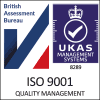Why Can’t I Install Solar PV without a Qualification?
All solar PV experts and electricians should be aware that there is more to a Solar PV installation than just energy production.
Below we have outlined the important points for consideration before a solar PV installation should take place.
 All solar panels, once correctly installed, must be able to; change energy into a form for the loads and the grid, be able to measure how much energy is produced and, of course, operate safely.
All solar panels, once correctly installed, must be able to; change energy into a form for the loads and the grid, be able to measure how much energy is produced and, of course, operate safely.
Alongside the installation of the solar panels, an inverter with isolators and surge resistant mechanisms in the loft space is required and, metering tools and an emergency isolator near the consumer unit is also needed.
In addition, all Solar PV installations must comply with the 17th Edition IEE Wiring Regulations and are required to be designed and installed in accordance with the Microgeneration Installation Standard MIS3002, issue 2.0.
This standard sets out the requirement for a system to be designed and installed in compliance  with the DTI guide, “Photovoltaic’s in Buildings, Guide to the Installation of PV Systems, Second Edition 2006”.
with the DTI guide, “Photovoltaic’s in Buildings, Guide to the Installation of PV Systems, Second Edition 2006”.
PV installation systems are classed as ‘special installations’ by Part P of the Building Regulations and require a Building Control Body to be notified to carry out an inspection.
With all these important regulations to be adhered to, it is essential that you undertake professional Solar PV training before you carry out any form of PV installation. Even if you are already a qualified electrician, it is a good idea to first undertake training in order to ensure you are fully compliant with all standard regulations.







